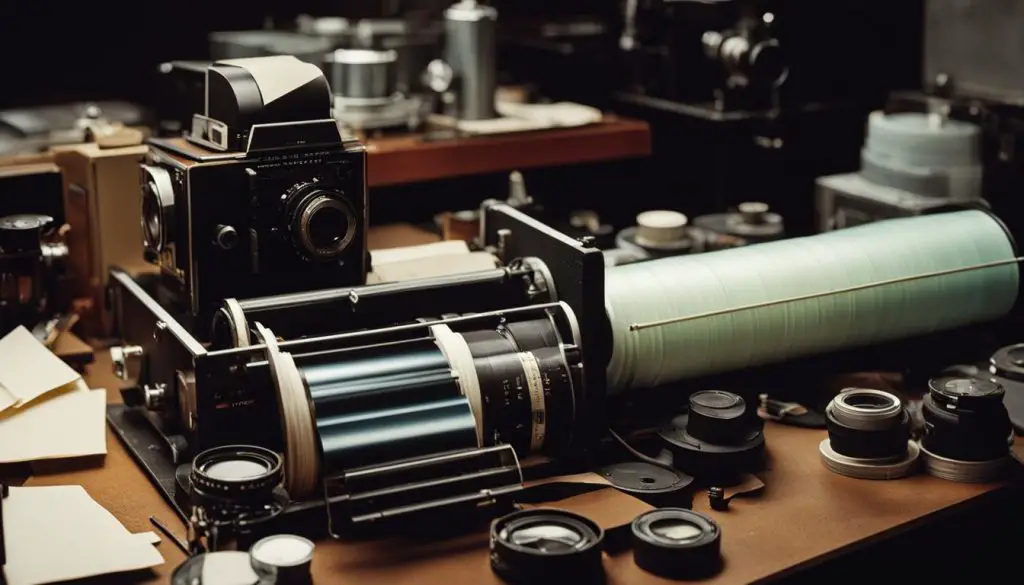TIFF is a widely used file format for storing high-quality images. Many users are concerned about whether opening and closing a TIFF file can lead to a loss of image quality. In this article, we will explore this topic and provide you with the information you need to know.

Key Takeaways:
- Opening and closing a TIFF file without making changes does not result in any loss of quality.
- If changes are made and the file is resaved, there may be a potential loss of quality depending on the nature of the edits.
- Printing quality remains identical as long as the original information of the image is preserved in the TIFF file.
- TIFF files are ideal for digital editing work and storing images with the best possible quality.
- JPEG files, on the other hand, are commonly used for online purposes due to their smaller file sizes and compatibility with various platforms.
Understanding the Differences Between JPEG and TIFF Files
When it comes to image file formats, JPEG and TIFF are two of the most common options. Understanding the differences between these file formats is essential for making informed decisions about file compression, image quality, and file size. Let’s take a closer look at the distinctions between JPEG and TIFF files.
Compression and Image Quality
One of the key differences between JPEG and TIFF files lies in their compression methods and the impact on image quality. JPEG files use lossy compression, which means that some data is discarded to reduce file size. This compression technique can result in a loss of picture quality and resolution, especially when the image is heavily compressed.
In contrast, TIFF files use either uncompressed or lossless compression methods, meaning that no data is discarded during compression. This results in high-quality images with no noticeable loss in resolution. TIFF files are preferred for situations where preserving image quality is of utmost importance, such as in professional photography or graphic design work.
File Size Considerations
Another factor to consider when choosing between JPEG and TIFF files is the resulting file size. JPEG files are known for their ability to achieve significantly smaller file sizes compared to TIFF files. This makes them ideal for situations where file size is a consideration, such as when uploading images to websites or sending them via email.
On the other hand, TIFF files tend to have larger file sizes due to their uncompressed or lossless compression methods. While this can be a drawback in terms of storage and transferability, it ensures that the image quality remains intact. TIFF files are particularly suitable for archival purposes or when extensive editing is required.
| File Format | Compression | Image Quality | File Size |
|---|---|---|---|
| JPEG | Lossy | May experience loss of quality | Smaller file size |
| TIFF | Uncompressed or lossless | No loss of quality | Larger file size |
Choosing the Right Format
In summary, JPEG files are commonly used for their smaller file sizes and are suitable for online purposes or when file size is a consideration. However, they may not be ideal for situations that require high-quality, uncompressed images. TIFF files, on the other hand, are preferred when image quality and editing flexibility are paramount, despite their larger file sizes.
Ultimately, the choice between JPEG and TIFF files depends on your specific needs and preferences. Whether you prioritize file size, image quality, or editing capabilities, understanding the differences between these file formats will help you make the right decision for your particular use case.
Image File Formats and Their Usage
When it comes to image file formats, the two most common options are JPEG (Joint Photographic Experts Group) and TIFF (Tagged Image File Format). Each format has its own strengths and weaknesses, making them suitable for different purposes and scenarios.

| File Format | Image Quality | File Size |
|---|---|---|
| TIFF | High-quality, minimal compression | Larger |
| JPEG | Good quality, lossy compression | Smaller |
Choosing the Right File Format for Printing Images
When it comes to printing images, choosing the right file format is crucial to ensure optimal image quality. Two popular file formats for printing are TIFF and JPEG. Both formats have their advantages, but understanding their differences can help you make an informed decision.
TIFF files are known for their lossless compression, which means that they preserve all the image data without any loss in quality. They are ideal for storing and editing images without compromising on the details. However, TIFF files tend to have larger file sizes compared to JPEG, which can make them more challenging to manage.
JPEG files, on the other hand, offer a good balance between file size and image quality. They use a lossy compression method, which results in slightly lower image quality compared to TIFF. However, the difference in print quality between high-quality JPEG files and TIFF files is minimal and often indistinguishable to the naked eye.
When it comes to printing images, professional print service machines cannot reproduce the extra image data that TIFF files contain, and our eyes cannot perceive the full color intensity that TIFF files can display. Therefore, opting for high-quality JPEG files is a smart choice for producing stunning photo prints that are just as good as those from TIFF files.
| TIFF Files | JPEG Files | |
|---|---|---|
| Image Quality | Lossless compression, preserving all details | Lossy compression, slight loss in image quality |
| File Size | Larger file sizes | Smaller file sizes |
| Print Quality | Minimal difference compared to high-quality JPEG prints | Excellent print quality |
| Editing Flexibility | High | Lower compared to TIFF |
| Compatibility | May be limited with some printers | Compatible with most printers |
In conclusion, while TIFF files offer higher image quality due to their lossless compression, there is no significant difference in print quality when compared to high-quality JPEG files. Opting for JPEG files can save disk space and ensure compatibility with most printing services and platforms, while still delivering excellent prints. So, when it comes to printing images, choose the file format that best suits your needs and enjoy beautiful, high-quality photo prints.
Conclusion
When it comes to maintaining image quality and minimizing quality loss, it is important to consider the right file format for your specific needs. Opening and closing a TIFF file without making changes does not result in any loss of quality. However, excessive re-saving or editing can potentially lead to a loss of quality, so it is advisable to avoid unnecessary alterations.
Choosing between JPEG and TIFF files depends on various factors such as usage, file size considerations, and the need for editing flexibility. JPEG files are suitable for online purposes due to their smaller file sizes and compatibility with most standard operating systems, editing programs, and printers. On the other hand, TIFF files are ideal for digital editing work and storing images with the best possible quality. However, their larger file sizes may limit compatibility with some printers and scanners.
Both file formats have their advantages, and it is essential to select the right one based on your specific requirements and preferences. By following best practices and preserving the original image data, it is possible to maintain image quality and minimize quality loss in both JPEG and TIFF formats. Ultimately, the choice between these file formats will depend on the intended usage, file size considerations, and the level of editing flexibility required.
